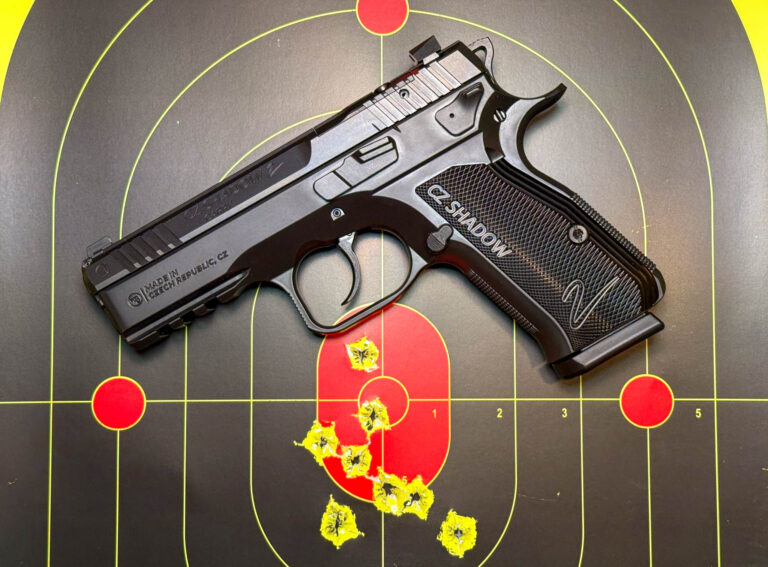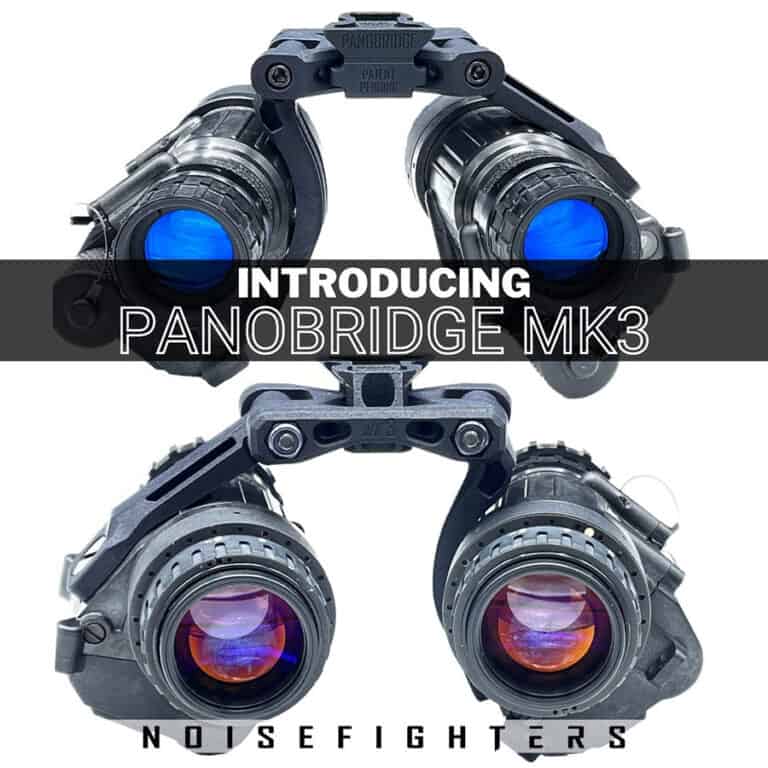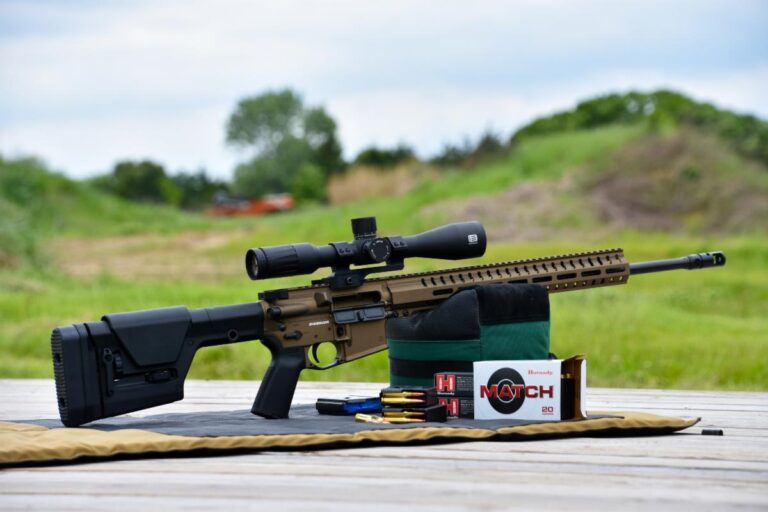Jacob Grey Firearms Nox 9—Precision, Control, Fits Like a Glove
More than 12 years in the making, Jacob Grey’s Nox 9 marks the…
More than 12 years in the making, Jacob Grey’s Nox 9 marks the…
Many Glock compensators rely on a set screw for attachment that can eventually…
According to the company, it has long been Griffin Armament’s belief that the…
• Built for road trips and off-road use• Manual transmission equipped• Wrapped in MultiCam Arctic…
I designed the Button Man to give shooters a low-round-count, low-light-engagement drill that involved both…
The V Exercise was created for those who would like a continuous moving-and-shooting exercise that…


Editor’s Disclaimer – “Brass Knuckles may be illegal is some states, please check all local laws before purchasing or possessing these items.
As I was casually scrolling through my social media feed, a striking image caught my eye. It was a reposted photo of an interesting product, one that appeared to be a set of brass knuckles, but with a modern twist – they were crafted from stainless steel and unlike any I’d ever seen before. The DEADWEIGHT Brass Knuckles.
My curiosity piqued, I delved deeper into the post, only to discover that this unique creation was a limited-edition art piece produced by none other than Leitner-Wise. Yes, you heard that right! The same design and engineering team renowned for their original LWRC firearms and their groundbreaking short-stroke piston system were now venturing into the world of art.
However, the assumption that they had completely transitioned into the art world is only partly correct. For those not in the know, Leitner-Wise, after parting ways with LWRC, established a design and engineering company. They continued their journey in developing innovative, high-quality firearms components and accessories while also offering their extensive design and engineering services to other companies. This included services ranging from technical data packages to problem-solving and even new product development. Although their customer list remains confidential for obvious reasons, their latest public collaboration led to the VKTR Industries VK-1 rifle receiving The Golden Trigger Award for The Most Innovative Long Gun of 2023 at this year’s Triggrcon event.
But let’s get back to those intriguing knuckledusters. Dubbed “DEADWEIGHT,” the cherry-picked dictionary definition offers an insightful perspective: “DEADWEIGHT /?d?d?we?t/ noun [singular] something that prevents an adversary from making progress or being successful.”

So, what exactly are these DEADWEIGHT knuckledusters? They are 1 lb of 304 Stainless Steel, meticulously machined from billet and presented as Leitner-Wise’s modern take on the ultimate impact weapon designed for the 21st century. Ergonomically engineered for optimal support, precise targeting, and minimal user trauma, these knuckledusters sport a unique aesthetic with three different surface finishes – media blasted, brushed, and polished. Each piece in this exclusive collection is consecutively numbered from 001 to 100.
Given that knuckledusters are designed to maximize a punch’s force by directing it toward a smaller, harder contact area, resulting in increased tissue disruption and a higher likelihood of bone fractures upon impact, the DEADWEIGHT undoubtedly meets and surpasses this objective. The extended and rounded palm grip also efficiently disperses the counter-forces across the user’s palm, thereby reducing the risk of injury to the user’s fingers.
Before we proceed, let’s take a quick historical detour to understand the origins of brass knuckles. While metal rings and knuckle-style weapons have been around for centuries, brass knuckles, as we recognize them today, trace back to mid-19th century America, and their manufacturing and usage saw a significant surge during the Civil War. A curious fact: if you visit Ford’s Theatre in Washington, D.C., you can witness the knuckles once carried by President Lincoln’s bodyguards. Although there are no federal restrictions on their possession, some states and jurisdictions do regulate them.

Interestingly, Leitner-Wise seems to have ingeniously and legitimately navigated this regulatory landscape by officially presenting DEADWEIGHT as “the initial offering from our 1736 COLLECTION, which celebrates 287 years of family design, innovation, manufacturing, and excellence across various industries and disciplines.” Moreover, it is introduced as “A must-have conversation piece. DEADWEIGHT is the first piece in our ‘The Art Of Violence’ collection,” raising the question: when does a tool become art, and conversely, when does art become a tool? As art, it clearly enjoys the protections of the First Amendment.
But is it really art?
In a world where a banana taped to a wall and a commonly available urinal, signed by the artist, are considered exemplary examples of “conceptual art” simply because the artist redefined the object’s significance with a new title and esthetic meaning, it appears that anything can be art if the artist deems it so.
In conclusion, I’m neither an art expert nor a critic, but I’m reminded of the classic Monty Python Last Supper sketch where a heated exchange unfolds between the Pope, played by John Cleese, and Michelangelo, played by Eric Idle. Idle tries to justify his artistic impression of the painting, prompting an increasingly exasperated Cleese to exclaim, “I’m the bloody Pope; I may not know much about art, but I know what I like!”

As one of the more interesting and most-hyped releases of late 2023/early 2024, it’s an understatement to say the CZ Shadow 2 Compact caused a bit of a…

Could this be your new truck gun? Following the wild success of the Little Badger, Chiappa Firearms has now released the Big Badger to the U.S. market. The…

Incredible stopping power in a PCC-esque package is the STAR10-P’s mission statement. It’s built out on the same billet upper and lower as DoubleStar’s original STAR10 rifle and…

Noisefighters took all the information it had received over the last two years and did something about it. The Panobridge MK3 is here.

Boonville, MO – CMMG is proud to announce the addition of Hornady’s® 6mm ARC (Advanced Rifle Cartridge) to the RESOLUTE™ and ENDEAVOR™ families of rifles. Designed and engineered for…

This grip module is designed to enhance the SIG Sauer P320 with improved ergonomics and a custom look. Features include overmolded rubber panels for comfort, an upgraded beaver…
© 2025 UN12 Magazine
© 2025 UN12 Magazine
Wait! Don’t forget to